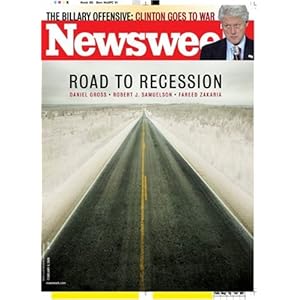Popular Magazines
 The primary purpose of these periodicals is to produce a profit for the publisher. Examples include Time, Newsweek, and People.
The primary purpose of these periodicals is to produce a profit for the publisher. Examples include Time, Newsweek, and People.
Available for public purchase at stores and newsstands
- As a whole, are designed to persuade, to entertain, and to sell advertised products
- The articles are short and are written to entertain the general public, not necessarily to inform
- Articles may also consist of brief summaries of research done by others
- Articles are seldom footnoted, and the source for the information is rarely provided
- Articles are usually written by freelance writers or members of the magazine's staff
- Articles often are illustrated with color graphics and photographs
- Advertisements are aimed at the general public
General Interest Magazines
The primary purpose of these periodicals is to provide information in a general manner to a broad audience. Examples include 
Sports Illustrated, Fast Company, and Rolling Stone.
- Articles generally written by a member of the editorial staff or a freelance writer
- Language of articles geared to any educated audience, no subject expertise assumed
- No peer review process
- Sources are sometimes cited, but more often there are no footnotes or bibliography
Trade Journals
 The primary purpose of trade journals is to provide news and information to people in a particular industry or profession. Examples include Women's Wear Daily, Hotel and Motel Management, Lodging, and Travel Weekly.
The primary purpose of trade journals is to provide news and information to people in a particular industry or profession. Examples include Women's Wear Daily, Hotel and Motel Management, Lodging, and Travel Weekly.
- Can be published by for-profit corporations, but are often published by a professional association
- Editorial staff, which selects the articles, consists mainly of individuals with experience or education within the industry or profession
- Authors are usually practitioners or educators within the industry or profession
- Articles focus on practical topics of interest to practitioners
- Articles rarely report original research, but excellent sources of statistical information about the industries they cover
- Articles often are illustrated with color graphics and photographs similar in nature to the popular magazines
- Journals often include employment announcements for job vacancies within the industry or profession
- Articles may not be extensively documented, providing few footnotes and rarely including bibliographies
- Advertisements are for industrial or specialized products and are aimed at people in that industry or profession
Scholarly Journals
 The primary purpose of scholarly journals is to inform and to report on original research or experimentation. Examples include New England Journal of Medicine, Journal of Safety Research, Journal of Studies on Alcohol, Annals of Tourism Research.
The primary purpose of scholarly journals is to inform and to report on original research or experimentation. Examples include New England Journal of Medicine, Journal of Safety Research, Journal of Studies on Alcohol, Annals of Tourism Research.
- Usually published by a scholarly professional association or university
- Editors are usually scholars in the field with established reputations. Before the editors accept an article for publication, it is first reviewed by scholars or researchers in the field
- Illustrations, if any, are usually graphs or charts, with few color graphics or photographs
- Articles are lengthy and extensively documented, with all references provided in footnotes or end notes
- Authors have conducted research in the field and are usually affiliated with a university or research center; authors' credentials are usually listed at the beginning or at the end of the articles
- Authors write in the language of their discipline
- Readers, usually other scholars or college students, are assumed to have some knowledge of the field and to be familiar with the jargon
- Articles are usually preceded by abstracts (summaries)
- Scholarly journals contain few, if any, advertisements

 The primary purpose of these periodicals is to produce a profit for the publisher. Examples include Time, Newsweek, and People.
The primary purpose of these periodicals is to produce a profit for the publisher. Examples include Time, Newsweek, and People.
 The primary purpose of trade journals is to provide news and information to people in a particular industry or profession. Examples include Women's Wear Daily, Hotel and Motel Management, Lodging, and Travel Weekly.
The primary purpose of trade journals is to provide news and information to people in a particular industry or profession. Examples include Women's Wear Daily, Hotel and Motel Management, Lodging, and Travel Weekly. The primary purpose of scholarly journals is to inform and to report on original research or experimentation. Examples include New England Journal of Medicine, Journal of Safety Research, Journal of Studies on Alcohol, Annals of Tourism Research.
The primary purpose of scholarly journals is to inform and to report on original research or experimentation. Examples include New England Journal of Medicine, Journal of Safety Research, Journal of Studies on Alcohol, Annals of Tourism Research.